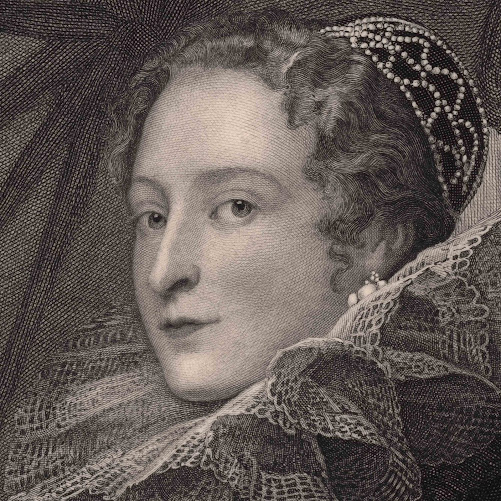Armand
Mathey-Doret (aka Armand-Emile Mathey-Doret) (1853–1931)
“Portrait of
Elena Grimaldi Cattaneo”, 1909, after Anthony van Dyck’s (aka Anthoni
[Ridder] van Dijck; Antoon van Dijk; Anton van Dyck; Anthony van Dijck)
(1599–1641) painting, “Marchesa Elena Grimaldi Cattaneo”, 1623 (see https://www.nga.gov/collection/art-object-page.1231.html),
a pencil signed proof-state impression of a vignette wiped section of a larger etching
published in London by Paul & Dominic Colnaghi & Co (1760–) (see
https://mercand.it/acquistiamo_stampa-armand-mathey-dipinto-van-dyck-ritratto-incisione-elena-grimaldi-cattaneo_3382).
Etching with
vignette wiped plate tone on buff coloured wove paper, pencil signed by the
artist.
Size: (sheet) 35.1
x 27.6 cm.
Inscribed in
plate along the upper edge: “Copyright 1909 by Messrs P & D.. Colnaghi
& Co, 13 & 14, Pall Mall East, London I. W. and M[…] Knoedler & Co.
[935 … Avenue] New York”.
Pencil signed
by Armand Mathey-Doret at lower right. Note that there is a soft pencil
inscription verso.
Regarding the inscribed
details for the two publishers along the upper edge of the plate, the following
insights about the two companies is interesting and may help to explain why
this etching was executed: “In 1907, in partnership with P. Colnaghi & Co.,
Knoedler acquired seven portraits of the Cattaneo family by Anthony van Dyck,
of which three now form part of the Widener Collection at the National Gallery
of Art in Washington D.C. In 1911, the firm sold Vermeer's Officer and Laughing
Girl to Henry Clay Frick. By the early 20th century, the Knoedler Gallery had
become one of the main suppliers of old master paintings in the United States
and would continue to serve as a major conduit for the acquisition of masterworks”
(Online Archive of California: https://oac.cdlib.org/findaid/ark:/13030/c8sq91rk/entire_text/).
Condition: a
strong impression creatively wiped to create a vignette image. Beyond minor
surface marks, the sheet is in a good condition with no tears, holes, folds,
abrasions or significant stains.
I am selling
this pencil signed artist’s proof that the artist has creatively wiped in the
printing process to create a vignette portrait taken from a larger plate after
a portrait by Van Dyck, for AU$293 (equivalent to approximately US$187.46, EUR 164.89,
or GBP 140.78 at the time of listing) and includes Express Mail Service (EMS)
postage and handling to any worldwide destination. Please note that any import
duties or taxes levied by the destination country are the responsibility of the
buyer and are not included in the purchase price. Payment is requested in
Australian dollars (AU$293).
If you are interested in purchasing this extraordinarily unique etching, please contact me (oz_jim@printsandprinciples.com) and I will send you a PayPal invoice to make the payment easy.
























































